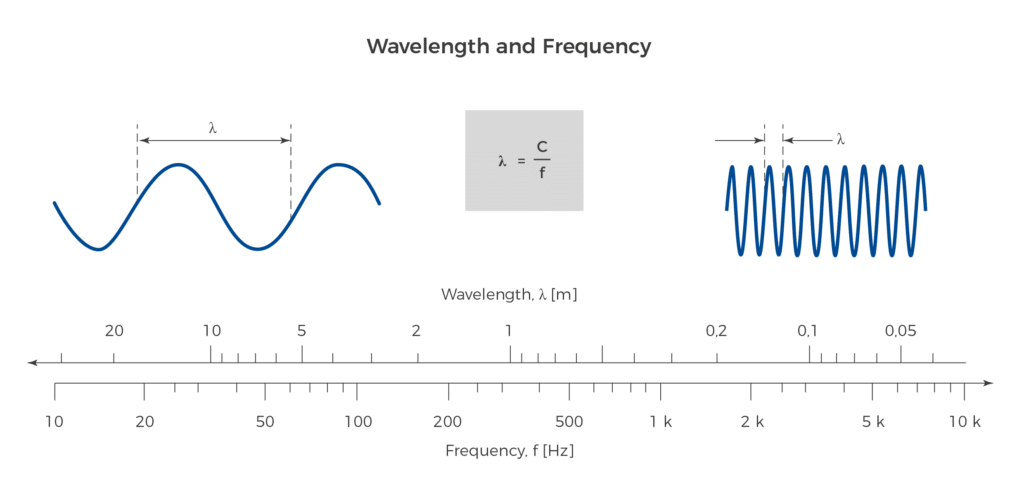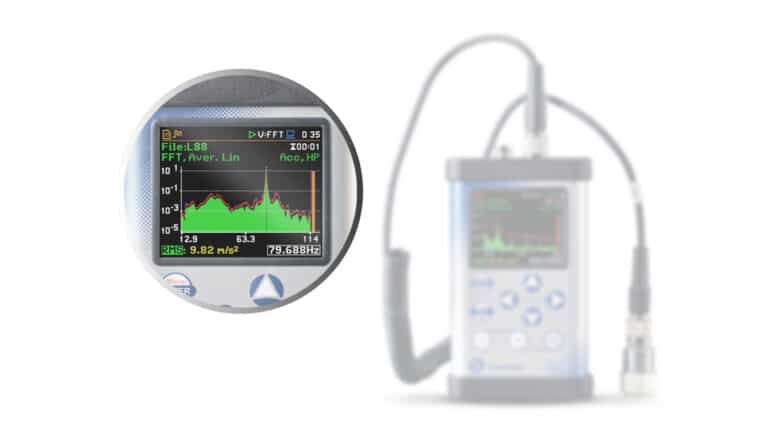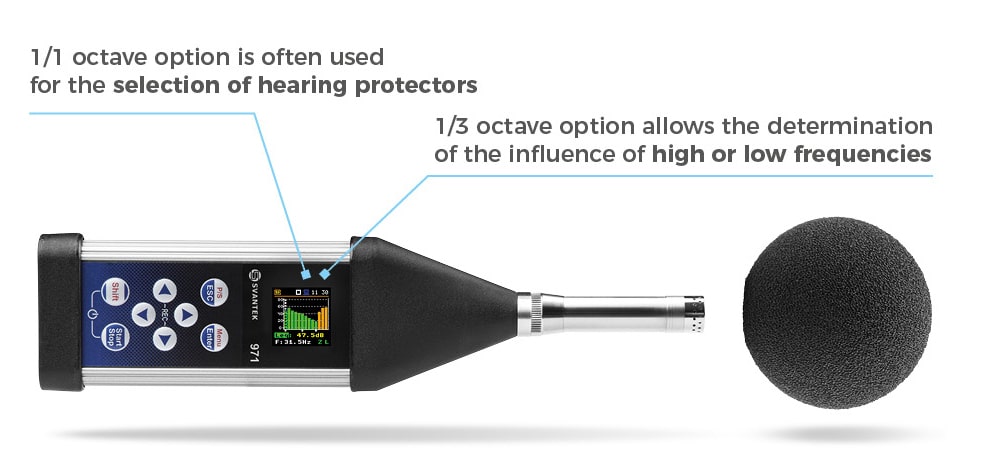Sound Frequency
Sound Frequency: a comprehensive understanding of its nature, analysis methods, and applications is essential for acoustics, impacting human perception, health, and various technological fields.
Sound Frequency: a comprehensive understanding of its nature, analysis methods, and applications is essential for acoustics, impacting human perception, health, and various technological fields.
In acoustics, the frequency of sound refers to the number of vibrations or cycles that occur in a sound wave per second, measured in Hertz (Hz). It is an essential concept for representing sound within a frequency spectrum. This involves dividing the observed range of sound frequencies into smaller, distinct ranges for detailed analysis. Such a division is possible due to the nature of sound signals, which are typically a combination of various frequencies. Frequency analysis, therefore, involves decomposing complex sound signals into their fundamental frequencies.
Understanding frequency in sound is therefore vital for both theoretical and practical applications in acoustics, enabling a deeper comprehension of how sound is produced, transmitted, and perceived.
Sound frequency is a key characteristic in acoustics, essential for understanding the nature and impact of sound. It offers insights into the origins of sound sources, how sound travels through different mediums, and its effects on human perception, hearing, and health. In the realm of acoustics, sound frequency analysis is primarily conducted using two common methods: n-octave filtering and Fast Fourier Transform (FFT) methods.
By employing these methods, acousticians and sound engineers can dissect and understand the complexities of sound frequency, facilitating better sound design, noise control, and auditory health measures. This understanding is fundamental in various applications, from designing acoustically optimized spaces to developing audio technology and protecting hearing health.

The most important sound frequencies about human perception, health, and comfort are those within the audible range, known as audio frequencies. These frequencies, typically ranging from 20 Hz to 20,000 Hz, are crucial as they directly affect how we perceive sounds, influence our emotional responses, and can impact our well-being.
In summary, while audio frequencies are most crucial for everyday human activities and health, both infrasound and ultrasound frequencies carry importance in specialized fields and can have indirect effects on human life. Understanding the full spectrum of sound frequencies, including those beyond human hearing, is essential in various scientific, medical, and industrial applications.

The most commonly encountered sound frequencies in human experience are those associated with speech, emphasizing the importance of hearing and speaking in our daily lives. These frequencies, central to human communication, are extensively measured and analyzed in various fields. The human voice typically operates within a specific frequency range: adult males generally have an average fundamental frequency around 120 Hz, while adult females average around 210 Hz. This range is dynamic and can be influenced by factors such as age, emotional state, and overall health.
Understanding the frequency range of human speech has significant implications in technology and acoustics. It informs the design and calibration of audio devices like microphones and speakers, ensuring they can accurately capture and reproduce these frequencies. Additionally, this knowledge is crucial in developing effective sound insulation materials and techniques, which are used to create environments that protect against unwanted noise and enhance the clarity of speech. The focus on human voice frequencies underlines their vital role in technology and environmental design, catering to one of our most crucial senses.

The most dangerous sound frequencies are those that pose a risk to human hearing and can cause structural damage to the environment, such as sound blasts from explosions. Prolonged exposure to high-intensity sounds, typically above 85 decibels (dB), can lead to noise-induced hearing loss. This risk is heightened at frequencies between 2,000 and 4,000 Hz, where human hearing sensitivity is the highest. Additionally, extremely low frequencies, when at high intensities, can cause discomfort and physical vibrations, leading to structural damage in buildings or other environments, particularly if these frequencies coincide with the resonance frequencies of objects.
The concept of resonance frequency in this context is crucial. Resonance occurs when the frequency of an external sound matches the natural frequency of an object, leading to an increase in amplitude and potential structural damage. This is particularly relevant in architectural and environmental acoustics, where understanding and mitigating resonance effects are critical to prevent damage. In human health, resonance frequencies within the body can vary, but exposure to intense resonant frequencies can lead to discomfort or even physical harm. Thus, managing and controlling dangerous frequencies, whether high for hearing safety or low for structural integrity, is a key aspect of acoustic design and public health regulations.
Sound transfers energy through its wave nature, a process that can have damaging effects on hearing or structures. This transfer of energy is fundamentally tied to the characteristics of sound waves, such as their frequency and amplitude. Sound waves propagate by causing particles in a medium (like air, water, or solid structures) to vibrate, transferring energy from one particle to the next. The amount and reach of this energy transfer depend largely on the sound wave’s frequency and intensity.
High-energy, low-frequency sound waves, such as those produced by jets or windmills, can travel long distances and penetrate obstacles such as walls, making them audible even inside houses. The low, high amplitude frequencies accompanying explosions can release a large amount of energy in a short period of time, causing physical damage to structures such as glass windows over a wide area. High-frequency sounds, on the other hand, although they can transmit less energy over a distance, can still cause significant damage if their intensity is high enough, as with the waves of ultrasonic cleaners.
Sound frequency is characterized by its measurement in Hertz (Hz), which is a reflection of the wave nature of sound. Hertz measures the number of complete cycles a sound wave undergoes per second. This measurement means that frequency is intrinsically linked to the speed of the sound wave’s vibrations. Higher frequencies are associated with more cycles per second due to shorter wavelengths, while lower frequencies are the result of fewer cycles per second corresponding to longer wavelengths.
The use of kilohertz (kHz), equal to 1,000 Hz, is common for describing higher frequencies, simplifying numerical expressions and calculations. This distinction between high and low frequencies is crucial in understanding sound propagation and management. Low-frequency sounds, with their extended wavelengths, are capable of traveling significant distances and penetrating obstacles, making them difficult to dampen. On the other hand, high-frequency sounds, characterized by their shorter wavelengths, are typically easier to control and contain. In real-life situations, sound often consists of a mix of various frequencies, and effective sound management requires pinpointing and addressing the dominant frequencies within a sound signal, as these frequencies predominantly influence the sound’s characteristics and behavior in different environments.


In acoustics, a commonly used reference frequency is 1,000 Hz, or 1 kHz, which aligns with the peak sensitivity of human hearing. This particular frequency serves as a central point in various acoustic measurements and calibration processes. For instance, the A-weighting system, used to approximate the human ear’s response to sound, is centered around this frequency. Acoustic devices, therefore, are often adjusted and calibrated with a reference signal at 1 kHz to ensure their accuracy and reliability in mimicking human auditory perception.
The calibration tone used at this frequency typically has an intensity of 94 dB, representing a sine wave of 1 kHz with sound energy equivalent to 94 dB. This specific setting is a standard in the field for testing and adjusting audio equipment. Beyond calibration, different frequency tones, including 1 kHz, are employed in various applications, such as evaluating the sound insulation properties of materials. In the urban environment, distinct frequency tones are integral to alarm systems, with sirens often using specific Hz ranges to produce effective warning sounds. These applications demonstrate the practical importance of the 1 kHz reference frequency in diverse acoustic contexts, from equipment calibration to public safety.

Sound frequency is visualized using a frequency spectrum, where Hertz (Hz) is plotted against decibels (dB). In this representation, Hertz delineates the frequency range, dividing the spectrum into segments of different frequencies, while decibels indicate the energy or intensity carried by each frequency. This visual format allows for a detailed and clear depiction of how sound energy is distributed across various frequencies.
For instance, in a spectrum displaying a frequency range up to 20,000 Hz (or 20 kHz), the energy levels across this range are shown, highlighting the dominant frequencies. A peak at around 1 kHz, for example, would indicate that this frequency has a higher energy level compared to others in the spectrum. Such visualizations are instrumental in various applications, including audio engineering, acoustics research, and sound design. They provide valuable insights into the composition of sound, revealing the predominant frequencies and their relative intensities, which is crucial for sound analysis, noise control, and audio optimization.

The frequency spectrum is a crucial tool in acoustics and audio engineering, providing insights into the composition of a sound signal. By displaying the relationship between frequency (measured in Hertz) and intensity (measured in decibels), the spectrum allows sound engineers to analyze and understand the structure of sound. This analysis is essential for reverse engineering a sound signal, enabling control and manipulation of its components. By identifying which frequencies are most prominent or problematic, engineers can make informed decisions about modifying or enhancing the sound.
One practical use of the frequency spectrum is in machinery maintenance, where it helps identify damaged parts based on the sound they emit. In environmental acoustics, it assists in pinpointing sound sources and developing strategies to protect hearing without entirely cutting off the sound. Furthermore, the spectrum is invaluable in detecting harmonic frequencies, a phenomenon where certain frequencies are integer multiples of a fundamental frequency. These harmonics play a significant role in the perceived quality of sound, and managing them can often resolve acoustic issues.
Another important application of the frequency spectrum is in measuring voice frequencies, crucial not only in music production and broadcasting but also in designing public announcement systems and auditory rooms. Ensuring these systems are tuned to the optimal voice frequencies enhances clarity and intelligibility, crucial in settings like auditoriums, conference halls, and public transport systems. This widespread application of the frequency spectrum underscores its importance in various aspects of sound analysis and management.

Measuring sound frequency is accomplished using various devices, the most common of which are sound analyzers equipped with half-inch microphones. Sound level meters with integrated frequency analysis capabilities, such as 1/1 or 1/3 octave band analysis or Fast Fourier Transform (FFT), are popular tools in this domain. These methods form the foundation for a wide range of applications in sound analysis. Particularly, the 1/3 octave analysis is highly regarded as it closely mirrors human hearing characteristics. This makes it an essential tool for voice frequency analysis, building acoustics, and occupational noise exposure assessment, where understanding the nuances of sound as perceived by the human ear is crucial.
Different types of sound analyzers are employed for specialized measurements of low and high frequencies. Low-frequency sounds, characterized by longer wavelengths, often require larger diameter microphones (like 1 inch) for accurate measurement. Conversely, high-frequency sounds, including ultrasonic frequencies, are typically measured using smaller diameter microphones (such as 1/4 inch). In applications focused on the human hearing spectrum, a microphone known as a MIRE (Microphone in Real Ear) is inserted into the ear canal in the form of a tube for precise measurement. The signals captured by these microphones are processed by a Digital Signal Processor (DSP), which calculates and visualizes spectrograms. These spectrograms provide a detailed representation of the sound’s frequency content, allowing for in-depth analysis and understanding of the sound’s characteristics and impact.
Frequency meters for sound come in various forms, each designed to measure specific ranges of sound frequencies. For instance, models like the SV 977 are capable of measuring ultrasound frequencies up to 40 kHz, making them suitable for applications where high-frequency sound analysis is essential. In the realm of audio frequencies, devices such as the SV 971A are used, which can measure frequencies ranging from 5 to 20 kHz, covering most of the human audible range. This range is crucial for general acoustic studies, audio equipment testing, and environmental noise monitoring.
For lower frequency sounds, known as infrasound, meters like the SV 979 are employed, capable of measuring frequencies as low as 3 Hz. These are particularly useful in applications like seismic monitoring, studying natural phenomena, or industrial settings where low-frequency vibrations are a concern. Additionally, specialized equipment like the MIRE (Microphone in Real Ear) can be used with devices such as the SV 102A for precise measurement inside the human ear. This application is especially important in contexts like aviation, where jet pilots may be exposed to specific sound environments, and accurate measurement of sound exposure within the ear canal is essential for hearing protection and safety assessments. Each of these frequency meters serves a unique purpose, catering to the diverse needs of sound frequency measurement in various professional and scientific contexts.

Sound level meters typically measure frequencies using two main methods: N-Octave Filtering and Fast Fourier Transform (FFT).

Sound Frequency Analysis Methods: Sound frequency is analyzed using n-octave filtering and Fast Fourier Transform (FFT), aiding in dissecting complex sound spectrums for applications like sound design and noise control.
Frequency in Sound: The frequency of sound, measured in Hertz (Hz), represents the vibrations per second in a sound wave, with frequency analysis decomposing complex signals into fundamental frequencies.
Important Sound Frequencies: Audio frequencies, within the human audible range of 20 Hz to 20,000 Hz, are crucial for perception and well-being, with infrasound and ultrasound having specialized applications.
Common Sound Frequencies: Frequencies related to human speech, ranging around 120 Hz for males and 210 Hz for females, influence technology and acoustics, impacting device design and environmental acoustics.
Dangerous Sound Frequencies: Frequencies posing risks to hearing and structural integrity, especially those above 85 dB and within 2,000 to 4,000 Hz, can cause hearing loss and physical damage, with resonance frequency playing a key role.
Energy Transfer in Sound: Sound transfers energy through wave propagation, with low-frequency sounds traveling farther and high-frequency sounds causing immediate damage in high-intensity scenarios.
Characterization of Sound Frequency: Sound frequency is characterized in Hertz (Hz), with higher frequencies having more cycles per second and lower frequencies fewer, impacting sound propagation and control.
Reference Sound Frequency: The 1 kHz frequency, aligning with peak human hearing sensitivity, serves as a reference in acoustic measurements and calibration, with applications in public safety and technology.
Visualization of Sound Frequency: Frequency is visualized using a spectrum, plotting Hertz against decibels to show sound energy distribution, aiding in audio engineering and sound optimization.
Frequency Spectrum Uses: The frequency spectrum helps in analyzing sound composition, detecting damaged machinery parts, identifying sound sources, and tuning public announcement systems for clarity.
Measuring Sound Frequency: Sound frequency is measured using analyzers with microphones, with 1/3 octave analysis mirroring human hearing, and specialized devices for low and high frequencies.
Frequency Meters Examples: Devices like the SV 977, SV 971A, and SV 979 measure various sound frequency ranges, with the MIRE system used for precise ear measurements in aviation and other contexts.
Sound Level Meter Frequency Measurement: Sound level meters use N-Octave Filtering and FFT to categorize and analyze sound frequencies, aiding in noise analysis and detailed sound characteristic studies.